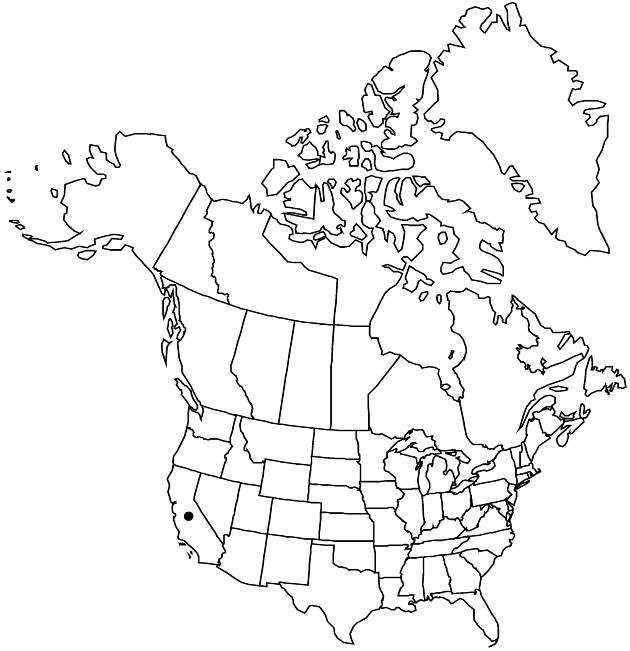Lessingia virgata
in G. Bentham, Pl. Hartw., 315. 1849.
Plants 5–60 cm. Stems erect, tan, villous to woolly. Leaves: basal withering by flowering; cauline margins entire, faces gland-dotted (in pits), rarely also stipitate-glandular (glands sometimesobscured by tomentum), abaxial usually woolly, sometimes villous. Heads borne singly or in corymbiform arrays, usually in axils of leaves. Involucres narrowly obconic, 5–7 mm. Phyllaries green or purple-tipped, faces villous to woolly, gland-dotted or not; inner scarious. Disc florets 3–6; corollas usually white, sometimes pale lavender (color more intense in tubes); style-branch appendages truncate-penicillate or lanceolate, 0.3–0.9 mm. Pappi white or tan, longer than cypselae. 2n = 10.
Phenology: Flowering Jun–Oct.
Habitat: Dry plains, and grassy openings of woodlands, sometimes volcanic soils
Elevation: 50–500 m
Discussion
Lessingia virgata is known from the foothills of the Cascade Range, foothills of the northern and central Sierra Nevada, and the northeastern Great Valley.
Selected References
None.
